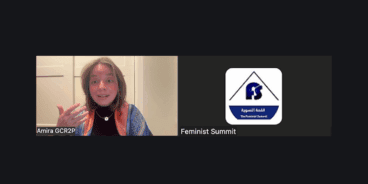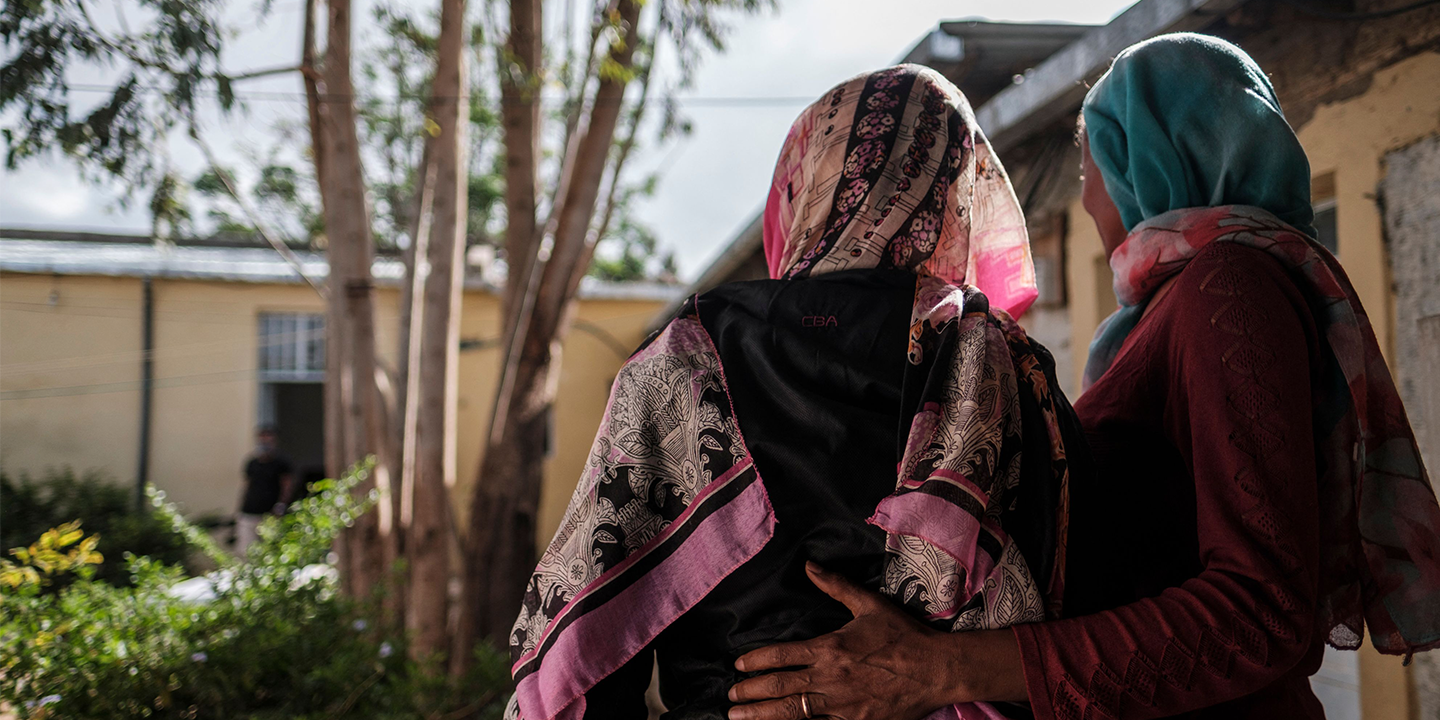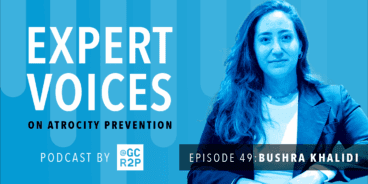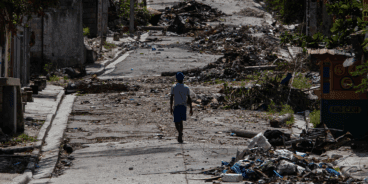

Recommendations on the systematic inclusion of a gender lens to UN Human Rights Council mechanisms and procedures
These recommendations are based on an event on “WPS and R2P: Institutionalizing the gender lens in Human Rights Council mechanisms and procedures,” hosted by the Global Centre for the Responsibility to Protect and the Permanent Missions of Canada and Liechtenstein to the UN in Geneva on 30 March 2022. This document has benefited from expert input provided by the event’s panelists, including Ms. Shaharzad Akbar, Former Chairperson, Afghanistan Independent Human Rights Commission; Ms. Reem Alsalem, UN Special Rapporteur on violence against women, its causes and consequences; Ms. Julie Dubé-Gagnon, UN Gender Specialist and Sexual and Gender-Based Violence Investigator; Ms. Patricia Sellers, Special Adviser on Slavery Crimes, Office of the Prosecutor of the International Criminal Court and Fellow Kellogg College, University of Oxford; Ms. Marta Valiñas, Chairperson, Independent International Fact-Finding Mission on the Bolivarian Republic of Venezuela.
UN Special Procedures, including Special Rapporteurs or Independent Experts, and Human Rights Council (HRC)-mandated investigative mechanisms, such as Commissions of Inquiry (CoI) or Fact-Finding Missions, often apply a gender lens when looking at situations at risk of, or experiencing, atrocity crimes. However, this practice is not yet systematic across the UN human rights system. Since women and girls are uniquely affected and targeted in many situations where atrocity crimes are being perpetrated, the systematic application of a gender lens would enhance holistic atrocity prevention strategies and improve the effective implementation of the Responsibility to Protect (R2P). The following recommendations aim to provide a framework to further strengthen and institutionalize the gender lens in HRC mechanisms and procedures.
RECOMMENDATIONS FOR UN MEMBER STATES
Mandating and renewing HRC mechanisms and procedures
-
-
- Systematically mandate analysis of human rights violations and atrocity risks through a gender lens and assessment of risks of gender-based violence (GBV) when establishing, or renewing, mandates of HRC mechanisms and procedures.
- Ensure that HRC mechanisms and procedures receive adequate resources to carry out their mandate. This should include the full funding of a gender analyst position, as well as support services for witness protection and other relevant elements of investigations. Resources should also be ensured for local service providers delivering medical and psychosocial support to witnesses. Special Procedures should also receive sufficient resources to hold regular consultations with civil society organizations, national human rights institutions and other relevant stakeholders.
- Encourage more systematic information sharing and exchange between different mechanisms and procedures and create opportunities within the HRC system to reflect upon best practices and lessons learned.
-
Engagement on country-specific and thematic initiatives at the HRC
-
-
- Systematically include gender-related questions and reflections when participating and delivering interventions at interactive dialogues.
- Give visibility and provide a platform across HRC discussions and initiatives to civil society, including women and LGBTQI+ leaders and their organizations.
- Consider ways in which gender dynamics affect the enjoyment of all human rights and include relevant gender- and atrocity prevention language in thematic and country-specific resolutions on cross-cutting human rights issues.
- Consider an HRC review that provides a synthesis of the emerging jurisprudence that Special Procedures are producing on gender and GBV. This could be organized thematically (e.g., all findings and recommendations relating to discrimination and/or violence against women and human rights defenders; intersection of gender and GBV with access of women to property, etc.)
-
Engagement with the wider UN human rights system
-
-
- Utilize the Universal Periodic Review (UPR) process to reiterate gender analysis conducted by HRC mechanisms and procedures. During their respective UPRs highlight persistent gaps within countries to ensure gender-sensitive atrocity prevention measures are adopted and implemented.
- Bridge the gap between the humanitarian and human rights system to allow a more holistic approach to justice, accountability and protection and assistance, as humanitarian actors often have access to victims and witnesses in areas or contexts restricted for investigators.
- Request the Office of the UN High Commissioner for Human Rights (OHCHR) develop a set of performance indicators for the HRC on the extent to which the Council is mainstreaming gender into its work. Similarly, the Special Procedures Coordination Committee could also develop a set of indicators on the same issues and report annually to the HRC.
- Consider an in-depth review of how gender and GBV have featured in HRC resolutions and the outcomes of UPRs.
- Ensure regular interactive dialogues with the Platform of Independent Expert Mechanisms on Discrimination and Violence against Women to discuss gender analysis and GBV, including in country situations experiencing atrocity crimes.
-
Support for civil society organizations in affected countries
-
-
- Actively support local and national civil society organizations and human rights defenders by providing funding to grassroots women’s and LGBTQI+ organizations that inform policies and operations of HRC mechanisms and procedures.
- Systematically include in discussions at the HRC the voice and wealth of expertise of women’s and LGBTQI+ rights groups and grassroots human rights movements.
-
RECOMMENDATIONS FOR MEMBERS OF INVESTIGATIVE MECHANISMS AND SPECIAL PROCEDURES
-
-
- Ensure a gender lens is part of a holistic approach to implementing the respective mandate.
- Conduct gender-sensitive analysis from the outset of monitoring and investigations, as well as throughout all aspects of information and evidence collection. Ensure that all members of investigative and reporting teams are conducting gender-sensitive analysis.
- Ensure the systematic inclusion of gender analysis in all reporting and updates to the HRC.
- Continue to work with and expand engagement with local and national service providers in countries affected by atrocity crimes to ensure medical and psychosocial support to victims and witnesses.
- Continue to work with UN Women and Justice Rapid Response to ensure the inclusion of a gender adviser to investigative teams.
- Actively engage in information sharing and exchange with different mechanisms and procedures to reflect upon best practices and lessons learned and reflect upon existing jurisprudence and information on gender-related issues by Treaty Bodies, Special Procedures and Investigative Bodies.
-
Related Content


Expert Voices on Atrocity Prevention Episode 49: Bushra Khalidi
